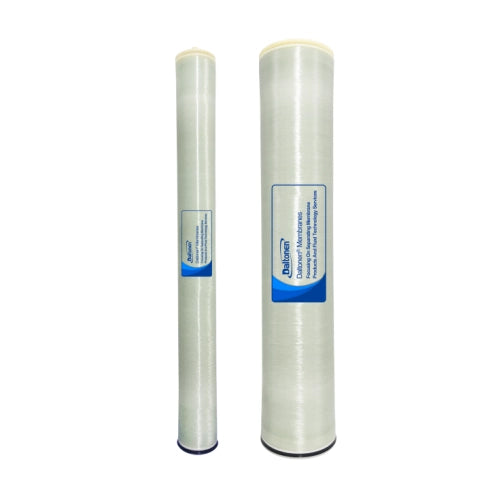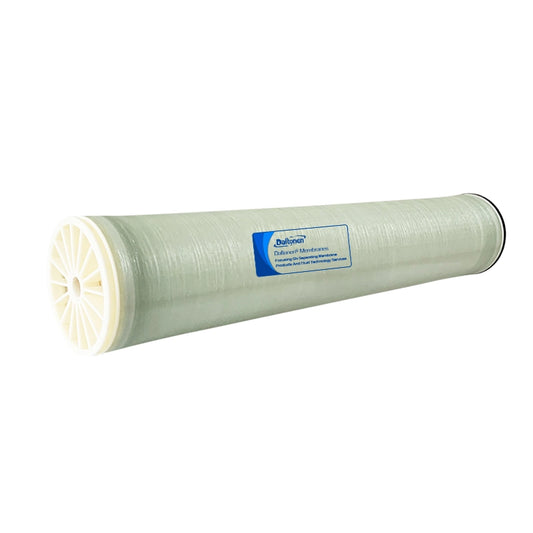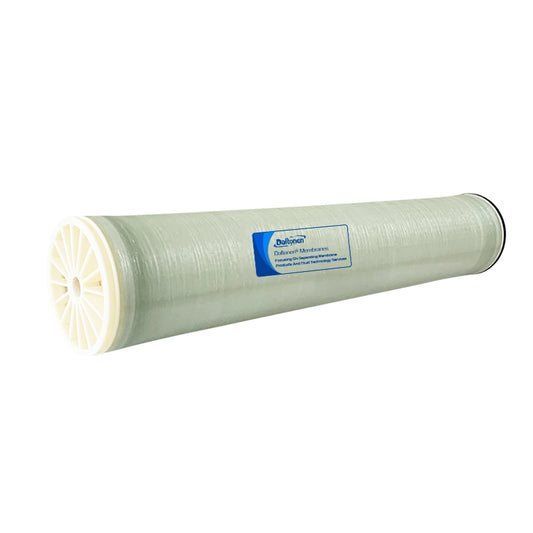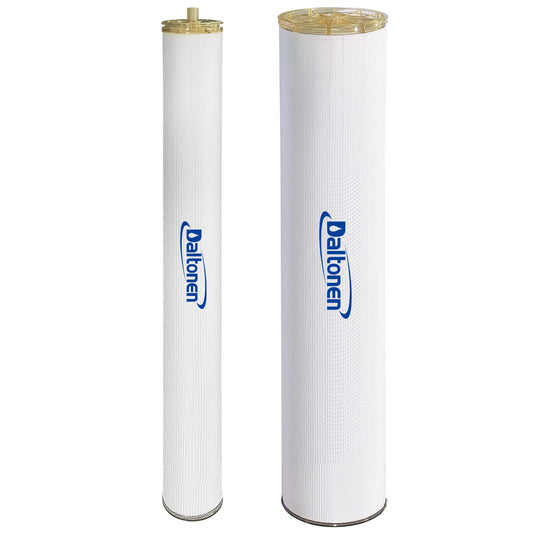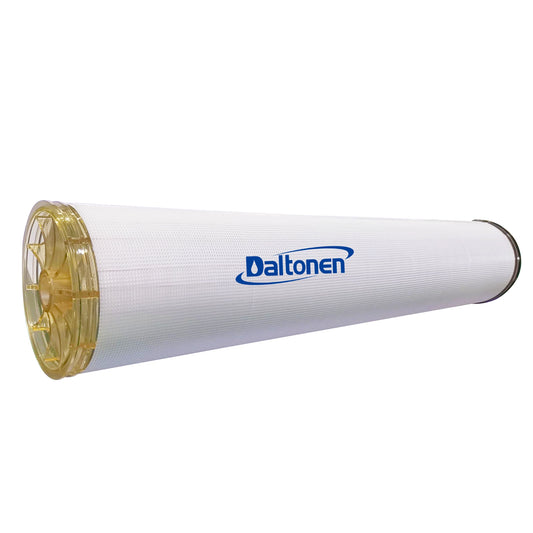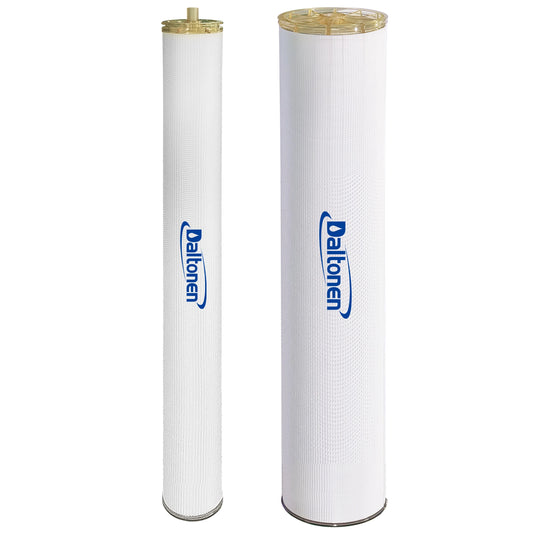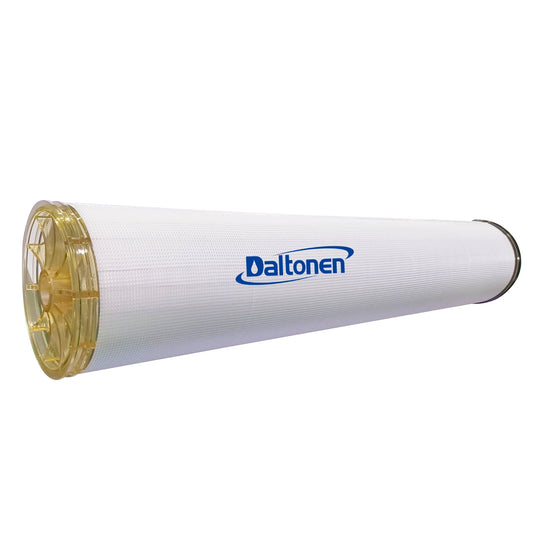How Nanofiltration Membranes Are Used to Concentrate Fruit Juices in the Food Processing Industry
How Nanofiltration Membranes Are Used to Concentrate Fruit Juices in the Food Processing Industry
1. Overview of Nanofiltration Membrane Technology
1.1 Principle of Nanofiltration Membranes
Nanofiltration membrane technology, a pressure-driven membrane separation technique between reverse osmosis and ultrafiltration, has a pore size of around 1 nanometer. It can effectively retain divalent and multivalent ions, some monovalent ions, and organic molecules with a relative molecular mass over 200. The separation mechanisms involve the dissolution-diffusion mechanism and pore flow channel mechanism. In apple juice processing, water molecules pass through the membrane's micropores under pressure, while larger molecules like pectin, pigments, and some sugars are retained on the membrane surface, achieving concentration. For instance, experiments show that at an operating pressure of 1.5 MPa, nanofiltration membranes can retain over 90% of substances in apple juice with a relative molecular mass above 500, effectively concentrating and partially separating the juice.
1.2 Advantages of Nanofiltration Membranes
Nanofiltration membrane technology offers significant benefits in apple juice concentration. Operating at room temperature, it prevents the destruction of nutrients and flavor compounds caused by traditional thermal concentration methods. Studies indicate that nanofiltration membrane-concentrated apple juice retains over 95% of vitamin C, compared to around 70% with thermal methods. The process is chemical-free, preserving the juice's natural quality. It also has high concentration efficiency and lower energy consumption, with a juice processing plant reporting energy costs at only about 30% of traditional evaporation methods. Additionally, nanofiltration membranes can separate and enrich certain juice components, such as aroma compounds, enhancing the juice's quality and market competitiveness.

2. Apple Juice Concentration Process
2.1 Raw Material Pretreatment
The quality of apples directly impacts the final product. During pretreatment, apples are carefully selected to remove rotten, diseased, or pest-infested fruits, with a required maturity of 80%-90% for optimal sugar and flavor content. The apples are then thoroughly washed via high-pressure spraying to eliminate dirt, pesticide residues, and microorganisms. Subsequently, they are crushed to an appropriate degree to ensure efficient juice extraction without excessive pulp that could hinder subsequent processes. A processing plant's equipment, for example, produces apple particles of 1-2 cm in size, achieving a juice extraction rate of 60%-65%.
2.2 Juicing and Clarification
The crushed apples undergo juicing through methods like pressing or pulping. Pressing uses mechanical pressure for higher juice clarity but lower extraction rates (55%-60%), while pulping yields higher extraction rates (65%-70%) but requires further clarification due to pulp particles. The extracted juice, containing impurities like pectin and microorganisms, is clarified via natural sedimentation, centrifugation, or membrane filtration. Natural sedimentation takes 12-24 hours with limited effectiveness, while centrifugation quickly removes most suspended solids but at a higher equipment cost. Membrane filtration, particularly microfiltration and ultrafiltration, is now mainstream. Microfiltration membranes (0.1-1 micrometer pores) remove suspended solids and some microorganisms, achieving 80%-90% juice transparency, while ultrafiltration membranes (1-100 nanometer pores) also partially remove large molecules like pectin, further enhancing clarity to 90%-95%.
3. Application of Nanofiltration Membranes in Apple Juice Concentration
3.1 Nanofiltration Membrane Concentration Process
The nanofiltration membrane concentration process begins with pretreated and clarified apple juice. The juice is pumped into the nanofiltration system and pressurized to 1.0-2.0 MPa. Under pressure, water and small molecules pass through the membrane as permeate, while larger molecules like sugars, pectin, pigments, and aroma compounds are retained on the concentrate side. As concentration progresses, the juice's soluble solids content increases. In a processing plant, at 1.5 MPa, the juice's soluble solids content rises from 12%-14% to 65%-70% (a 5-6 times concentration) within 2-3 hours, much faster than traditional evaporation.
3.2 Concentration Effects and Quality Impact
Nanofiltration membranes significantly enhance juice concentration and quality. They effectively increase soluble solids content with high efficiency, retaining 80%-95% of organic molecules over 200 in relative molecular mass and nearly 100% of divalent and multivalent ions. This results in higher concentration and stability. The room-temperature process preserves nutrients and flavors, with vitamin C retention over 95% and reducing sugar retention around 90%. The juice maintains good color and aroma, closely resembling fresh juice in taste and flavor, giving it a market edge. Additionally, nanofiltration membranes can selectively separate and enrich certain juice components, such as aroma compounds, further improving quality.

4. Economic and Environmental Benefits of Nanofiltration Membrane Concentration
4.1 Cost Analysis
Nanofiltration membrane concentration offers significant cost advantages. Energy consumption is drastically reduced compared to traditional evaporation, which requires substantial thermal energy. A processing plant reports energy costs at only about 30% of traditional methods. For example, if traditional evaporation consumes 1,000 kWh per ton of apple juice, nanofiltration uses around 300 kWh, saving about 560 yuan per ton at 0.8 yuan per kWh. The initial investment for nanofiltration equipment is higher but offers long-term benefits with a 3-5 year lifespan, low maintenance costs, and high automation reducing labor needs. Additionally, higher concentration efficiency reduces raw material requirements by about 15% per ton of concentrated juice, lowering costs further.
4.2 Environmental Advantages
Nanofiltration membrane concentration is environmentally friendly. It generates less wastewater with lower organic content during concentration, reducing pollution risks. A processing plant reduces wastewater discharge by about 60%, lowering treatment costs and environmental impact. The room-temperature process saves energy and reduces greenhouse gas emissions, with an estimated 0.5-ton CO2 reduction per ton of concentrated juice. The chemical-free process prevents pollution from residues, and the permeate can be recycled for irrigation or equipment cleaning, promoting resource循环利用.
5. Technical Challenges and Future Development Directions
5.1 Current Technical Bottlenecks
Despite advantages, nanofiltration membrane technology faces challenges. Membrane fouling from pectin, proteins, polysaccharides, and microorganisms in apple juice causes flux decline, increasing energy use and costs. For example, a processing plant observes flux dropping to 30%-40% of initial levels, requiring frequent cleaning that affects efficiency and may damage membranes. Existing cleaning methods like physical and chemical cleaning have limited effectiveness and potential membrane corrosion. Additionally, current membrane materials need improvement in acid-alkali resistance, oxidation resistance, and mechanical strength for long-term stability in apple juice processing. The balance between separation selectivity and permeability is also a challenge. Furthermore, integration with other processing steps requires optimization for overall efficiency and quality improvements.
5.2 Development Trends
Future development focuses on several areas. Research into high-performance nanofiltration membrane materials will continue, using methods like nanocomposite and surface modification technologies to enhance chemical resistance, mechanical strength, and service life. New polymeric or inorganic materials may further improve separation performance and permeability. Membrane fouling control will advance with eco-friendly cleaning agents and techniques like enzymatic cleaning and ultrasound-assisted cleaning, as well as optimized operating conditions to slow fouling. Self-cleaning membranes using photocatalytic or electrochemical principles are also promising. The concentration process will become more intelligent and integrated, with online monitoring and control systems for automated optimization. Combining nanofiltration with other membrane technologies could create more efficient processing workflows. Sustainability will drive integration with renewable energy and resource recycling, minimizing environmental impact and waste.
6. Conclusion
Nanofiltration membrane technology revolutionizes apple juice concentration. Its unique performance between reverse osmosis and ultrafiltration allows precise retention of key juice components for efficient concentration. The room-temperature process preserves nutrients and flavors, with vitamin C retention over 95% and reducing sugar retention around 90%, producing juice quality close to fresh. Economically, it offers significant cost savings with 30% energy consumption of traditional methods, long equipment life, low maintenance, high automation reducing labor, and higher raw material efficiency. Environmentally, it reduces wastewater by about 60%, lowers energy use and CO2 emissions, avoids chemicals, and enables permeate recycling, aligning with sustainability goals. Despite challenges like membrane fouling and material limitations, ongoing advancements in membrane materials, fouling control, intelligence, and sustainability will expand nanofiltration's role in apple juice concentration and the broader food processing industry, boosting food industry quality.
